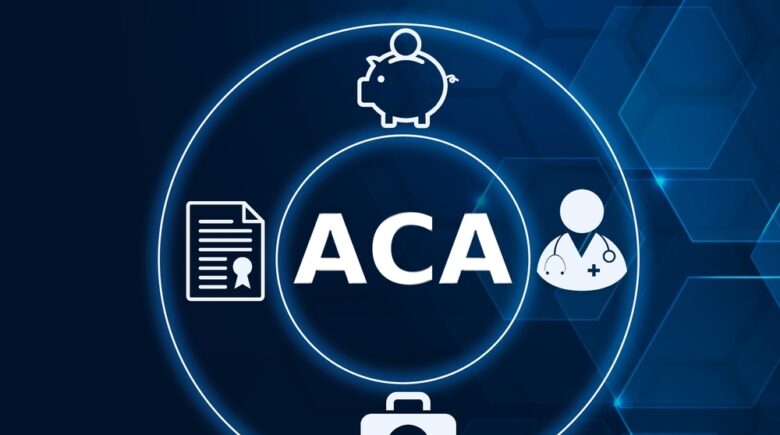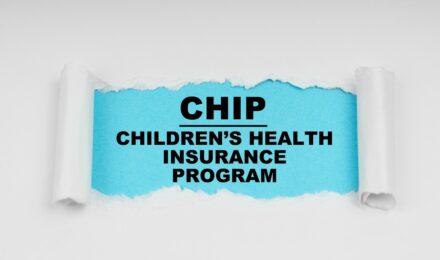Contents
- 1 Affordable Care Act Key Statistics
- 2 Affordable Care Act Premium Tax Credits (PTCs)
- 3 Cost-Sharing Reductions (CSRs)
- 4 Affordable Care Act Extra Savings for Older Adults
- 5 Affordable Care Act Family Glitch Fix
- 6 American Rescue Plan Act (ARPA) Subsidies
- 7 Maximizing Your Savings with ACA
- 8 Factors Contributing to Unaffordable Healthcare:
- 9 Consequences of Unaffordable Healthcare:
- 10 Potential Solutions:
- 11 Conclusion
- 12 FAQs
- 13 Sources
The Affordable Care Act (ACA), also known as Obamacare, has been a game-changer for millions of Americans seeking affordable health insurance. While many are familiar with the ACA’s core benefits, several lesser-known subsidies can significantly reduce health insurance costs. In this article, we’ll explore five little-known ACA subsidies that could save you thousands of dollars.
Despite being one of the world’s wealthiest nations, the United States faces a stark reality: millions of Americans struggle to afford healthcare. The issue persists due to rising costs, inadequate insurance coverage, and income disparities.
Affordable Care Act Key Statistics
Over 30 million Americans lack health insurance (U.S. Census Bureau, 2022).
44% of adults struggle to pay medical bills (Kaiser Family Foundation, 2022).
1 in 5 adults delay or forego medical care due to costs (Commonwealth Fund, 2022).
If you have been thinking about new enrollment or wondering about how the Affordable Care Act might benefit you, there’s never been a better time to learn more. In this article, our aim is to shed light on the subject and make what could be considered a complex topic seem more manageable.
Affordable Care Act Premium Tax Credits (PTCs)
Premium Tax Credits are one of the most significant Affordable Care Act (ACA) subsidies. Eligible individuals and families can receive financial assistance to lower their monthly health insurance premiums, providing some much needed relief for families that qualify. To qualify, your income must fall between 100% and 400% of the Federal Poverty Level (FPL). [1]
2024 FPL guidelines:
Individual: $14,580 – $58,320
Family of four: $29,640 – $118,560
PTCs can be claimed in advance, directly reducing your monthly premiums.
Cost-Sharing Reductions (CSRs)
Cost-Sharing Reductions help eligible individuals and families with out-of-pocket expenses, such as deductibles and copays. To qualify, your income must fall between 100% and 250% of the FPL. [2]
2024 FPL guidelines:
Individual: $14,580 – $36,900
Family of four: $29,640 – $92,400
CSRs can significantly lower your out-of-pocket costs.
Affordable Care Act Extra Savings for Older Adults
Older adults (ages 50-64) may be eligible for increased premium tax credits. This subsidy helps bridge the gap between Medicare eligibility and affordable health insurance.
Eligibility: Income between 100% and 400% of FPL
Benefits: Enhanced premium tax credits, potentially reducing premiums by hundreds or thousands of dollars
Affordable Care Act Family Glitch Fix
The Family Glitch Fix, introduced in 2022, expands subsidy eligibility for families. Previously, affordability was determined by the employer’s plan for the employee only. Now, the affordability test considers the entire family’s premium costs. [3]
Eligibility: Families with employer-sponsored insurance, where family coverage exceeds 9.12% of household income
Benefits: Potential eligibility for subsidized marketplace plans
American Rescue Plan Act (ARPA) Subsidies
The American Rescue Plan Act, enacted in 2021, provides temporary subsidies for 2021-2025. These subsidies:
Enhance premium tax credits for eligible individuals and families
Eliminate premiums for those with incomes below 150% of FPL
Expand subsidy eligibility to higher income levels
Maximizing Your Savings with ACA
To take advantage of the Affordable Care Act subsidies:
1. Visit your state’s health insurance marketplace.
2. Consult with a licensed health insurance agent or broker.
3. Review and update your application annually to ensure continued eligibility.
Factors Contributing to Unaffordable Healthcare:
1. Rising Premiums and Deductibles: Increasing healthcare costs outpace wage growth, making coverage unaffordable.
2. Inadequate Insurance: Skinny plans, high-deductible plans, and lack of coverage for essential services exacerbate financial burdens.
3. Income Inequality: Low-income individuals and families struggle to afford healthcare due to limited financial resources.
4. Medical Debt: Unexpected medical expenses lead to crippling debt, affecting credit scores and financial stability.
Consequences of Unaffordable Healthcare:
1. Delayed or Foregone Care: Americans skip necessary treatments, compromising health outcomes.
2. Worsening Health Conditions: Untreated conditions escalate into complex, costly problems.
3. Financial Ruin: Medical debt leads to bankruptcy, housing instability, and reduced economic mobility.
4. Mental Health Impacts: Financial stress and healthcare anxiety affect mental well-being.
Potential Solutions:
1. Expand Medicaid and Affordable Care Act (ACA): Increase access to affordable coverage for low-income individuals.
2. Improve Insurance Affordability: Enhance subsidies, reduce premiums, and promote value-based care.
3. Address Medical Debt: Implement debt forgiveness programs and regulate collection practices.
4. Promote Preventive Care: Emphasize early interventions and cost-effective treatments.
Conclusion
The struggle to afford healthcare is a pressing concern for millions of Americans. Addressing this issue requires comprehensive reforms, increased access to affordable coverage, and innovative solutions to alleviate medical debt. By prioritizing healthcare affordability, we can improve health outcomes, reduce financial burdens, and strengthen the well-being of our nation.
The Affordable Care Act offers numerous subsidies to make health insurance more affordable. By understanding and leveraging these little-known subsidies, you can significantly reduce your health insurance costs. Don’t miss out on thousands of dollars in potential savings – explore these subsidies today.
FAQs
Q: What is the income limit for ACA subsidies?
A: Generally, 100% to 400% of the Federal Poverty Level.
Q: Can I qualify for subsidies if I have employer-sponsored insurance?
A: Yes, through the Family Glitch Fix, if family coverage exceeds 9.12% of household income.
Q: How do I apply for ACA subsidies?
A: Visit your state’s healthcare site or consult with a licensed health insurance agent.
Sources
- Eligibility for the premium tax credit | Internal Revenue Service (irs.gov)
- Cost sharing reduction (CSR) – Glossary | HealthCare.gov
- IRS regulations fix the ACA’s ‘family glitch’ as of 2023 | healthinsurance.org
Contents
- 1 Affordable Care Act Key Statistics
- 2 Affordable Care Act Premium Tax Credits (PTCs)
- 3 Cost-Sharing Reductions (CSRs)
- 4 Affordable Care Act Extra Savings for Older Adults
- 5 Affordable Care Act Family Glitch Fix
- 6 American Rescue Plan Act (ARPA) Subsidies
- 7 Maximizing Your Savings with ACA
- 8 Factors Contributing to Unaffordable Healthcare:
- 9 Consequences of Unaffordable Healthcare:
- 10 Potential Solutions:
- 11 Conclusion
- 12 FAQs
- 13 Sources
The Affordable Care Act (ACA), also known as Obamacare, has been a game-changer for millions of Americans seeking affordable health insurance. While many are familiar with the ACA’s core benefits, several lesser-known subsidies can significantly reduce health insurance costs. In this article, we’ll explore five little-known ACA subsidies that could save you thousands of dollars.
Despite being one of the world’s wealthiest nations, the United States faces a stark reality: millions of Americans struggle to afford healthcare. The issue persists due to rising costs, inadequate insurance coverage, and income disparities.
Affordable Care Act Key Statistics
Over 30 million Americans lack health insurance (U.S. Census Bureau, 2022).
44% of adults struggle to pay medical bills (Kaiser Family Foundation, 2022).
1 in 5 adults delay or forego medical care due to costs (Commonwealth Fund, 2022).
If you have been thinking about new enrollment or wondering about how the Affordable Care Act might benefit you, there’s never been a better time to learn more. In this article, our aim is to shed light on the subject and make what could be considered a complex topic seem more manageable.
Affordable Care Act Premium Tax Credits (PTCs)
Premium Tax Credits are one of the most significant Affordable Care Act (ACA) subsidies. Eligible individuals and families can receive financial assistance to lower their monthly health insurance premiums, providing some much needed relief for families that qualify. To qualify, your income must fall between 100% and 400% of the Federal Poverty Level (FPL). [1]
2024 FPL guidelines:
Individual: $14,580 – $58,320
Family of four: $29,640 – $118,560
PTCs can be claimed in advance, directly reducing your monthly premiums.
Cost-Sharing Reductions (CSRs)
Cost-Sharing Reductions help eligible individuals and families with out-of-pocket expenses, such as deductibles and copays. To qualify, your income must fall between 100% and 250% of the FPL. [2]
2024 FPL guidelines:
Individual: $14,580 – $36,900
Family of four: $29,640 – $92,400
CSRs can significantly lower your out-of-pocket costs.
Affordable Care Act Extra Savings for Older Adults
Older adults (ages 50-64) may be eligible for increased premium tax credits. This subsidy helps bridge the gap between Medicare eligibility and affordable health insurance.
Eligibility: Income between 100% and 400% of FPL
Benefits: Enhanced premium tax credits, potentially reducing premiums by hundreds or thousands of dollars
Affordable Care Act Family Glitch Fix
The Family Glitch Fix, introduced in 2022, expands subsidy eligibility for families. Previously, affordability was determined by the employer’s plan for the employee only. Now, the affordability test considers the entire family’s premium costs. [3]
Eligibility: Families with employer-sponsored insurance, where family coverage exceeds 9.12% of household income
Benefits: Potential eligibility for subsidized marketplace plans
American Rescue Plan Act (ARPA) Subsidies
The American Rescue Plan Act, enacted in 2021, provides temporary subsidies for 2021-2025. These subsidies:
Enhance premium tax credits for eligible individuals and families
Eliminate premiums for those with incomes below 150% of FPL
Expand subsidy eligibility to higher income levels
Maximizing Your Savings with ACA
To take advantage of the Affordable Care Act subsidies:
1. Visit your state’s health insurance marketplace.
2. Consult with a licensed health insurance agent or broker.
3. Review and update your application annually to ensure continued eligibility.
Factors Contributing to Unaffordable Healthcare:
1. Rising Premiums and Deductibles: Increasing healthcare costs outpace wage growth, making coverage unaffordable.
2. Inadequate Insurance: Skinny plans, high-deductible plans, and lack of coverage for essential services exacerbate financial burdens.
3. Income Inequality: Low-income individuals and families struggle to afford healthcare due to limited financial resources.
4. Medical Debt: Unexpected medical expenses lead to crippling debt, affecting credit scores and financial stability.
Consequences of Unaffordable Healthcare:
1. Delayed or Foregone Care: Americans skip necessary treatments, compromising health outcomes.
2. Worsening Health Conditions: Untreated conditions escalate into complex, costly problems.
3. Financial Ruin: Medical debt leads to bankruptcy, housing instability, and reduced economic mobility.
4. Mental Health Impacts: Financial stress and healthcare anxiety affect mental well-being.
Potential Solutions:
1. Expand Medicaid and Affordable Care Act (ACA): Increase access to affordable coverage for low-income individuals.
2. Improve Insurance Affordability: Enhance subsidies, reduce premiums, and promote value-based care.
3. Address Medical Debt: Implement debt forgiveness programs and regulate collection practices.
4. Promote Preventive Care: Emphasize early interventions and cost-effective treatments.
Conclusion
The struggle to afford healthcare is a pressing concern for millions of Americans. Addressing this issue requires comprehensive reforms, increased access to affordable coverage, and innovative solutions to alleviate medical debt. By prioritizing healthcare affordability, we can improve health outcomes, reduce financial burdens, and strengthen the well-being of our nation.
The Affordable Care Act offers numerous subsidies to make health insurance more affordable. By understanding and leveraging these little-known subsidies, you can significantly reduce your health insurance costs. Don’t miss out on thousands of dollars in potential savings – explore these subsidies today.
FAQs
Q: What is the income limit for ACA subsidies?
A: Generally, 100% to 400% of the Federal Poverty Level.
Q: Can I qualify for subsidies if I have employer-sponsored insurance?
A: Yes, through the Family Glitch Fix, if family coverage exceeds 9.12% of household income.
Q: How do I apply for ACA subsidies?
A: Visit your state’s healthcare site or consult with a licensed health insurance agent.






